We have so much to accomplish, but there’s only 24 hours in a day! How can we use our natural style to improve our time management?
Using DISC tools: broadening our scope
People tend to place Extended DISC® tools into a narrow range of applications. It is often seen as a communication tool, and can be applied to leadership and sales. However, DISC can be used in any imaginable application because it explains how we do things and how we behave. One of the areas it can impact is how we manage our time.
Using DISC in time management
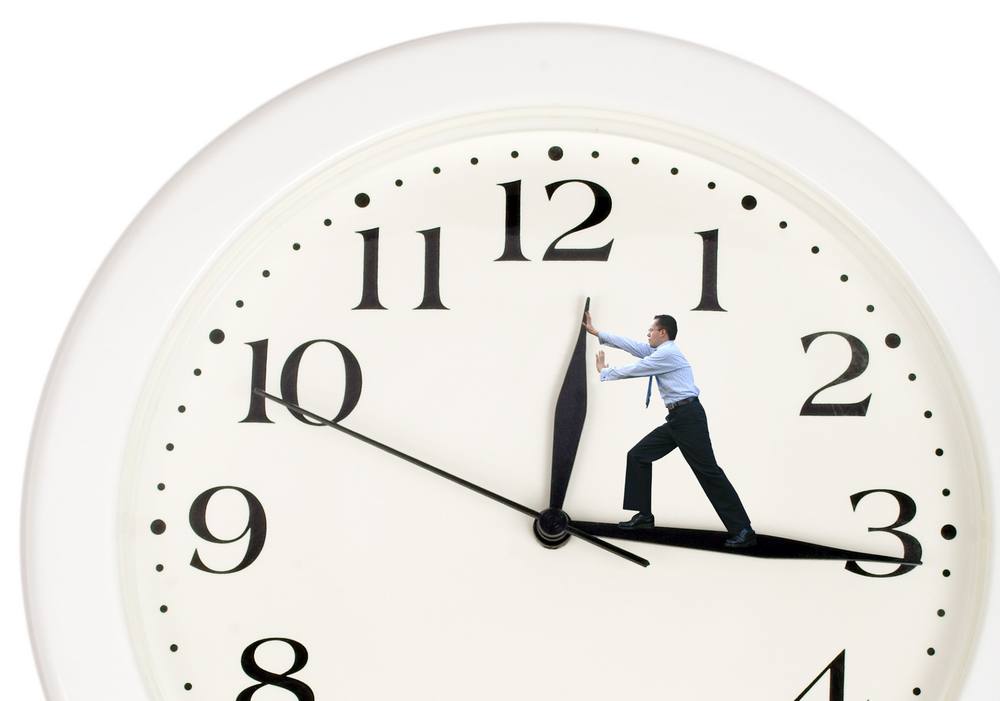 Everyone wants to manage their time better to be more productive and decrease stress levels. You can use Extended DISC® assessments in helping manage time more effectively. The key is to help your clients develop better self-awareness. Once they start developing self-awareness, you can add another layer, and approach time management issues. The awareness allows your clients to prepare and plan how to be more effective with time.
Everyone wants to manage their time better to be more productive and decrease stress levels. You can use Extended DISC® assessments in helping manage time more effectively. The key is to help your clients develop better self-awareness. Once they start developing self-awareness, you can add another layer, and approach time management issues. The awareness allows your clients to prepare and plan how to be more effective with time.
We all manage our time differently. Our DISC style has a huge impact on how we deal with time. It impacts our perspective and how we approach things; whether we start things right away or if we tend to plan first.
D-styles and time management
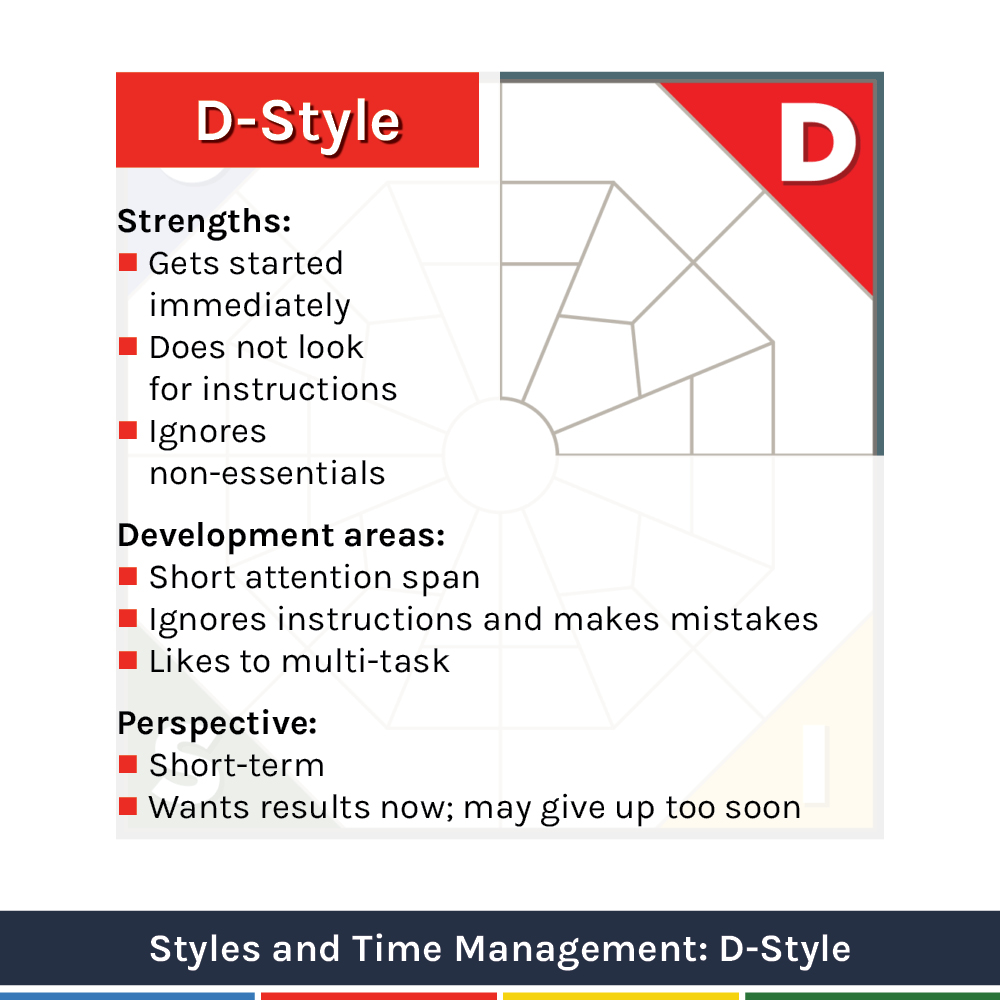
D-styles want to do it now because they tend to be more focused on getting results right away and getting it done fast. They are comfortable getting started right away and may ignore non-essentials. Many D-styles are effective at time-management because of their task-focused and fast-paced style, but we know D-styles are not always effective at managing their time. D-styles may make more mistakes because they tend to overlook instructions and are more comfortable taking risks. Their short-term perspective may cause a diversion in their attention span. They want results now and may give up too soon.
D-styles can be more self-aware by practicing patience. When the D-style is under pressure they are working hard to get things done. They may think they are managing their time well, but they may be able to perform better if they were to actually slow it down. They may feel comfortable getting started right away, but they may end up going in an entirely wrong direction and have to back track.
D-styles need to be aware to not abandon efforts to soon if they don’t see results right away. In reality, ideas sometimes take a little longer to develop and grow. They need to consider others, who are part of implementation of the ideas, don’t always move at the same pace. Patience may sound counter-intuitive to D-styles wanting to get things done quickly, right? However, thinking about the steps needed and planning a little more can end up saving time and getting them to their desired results faster.
I-styles and time management
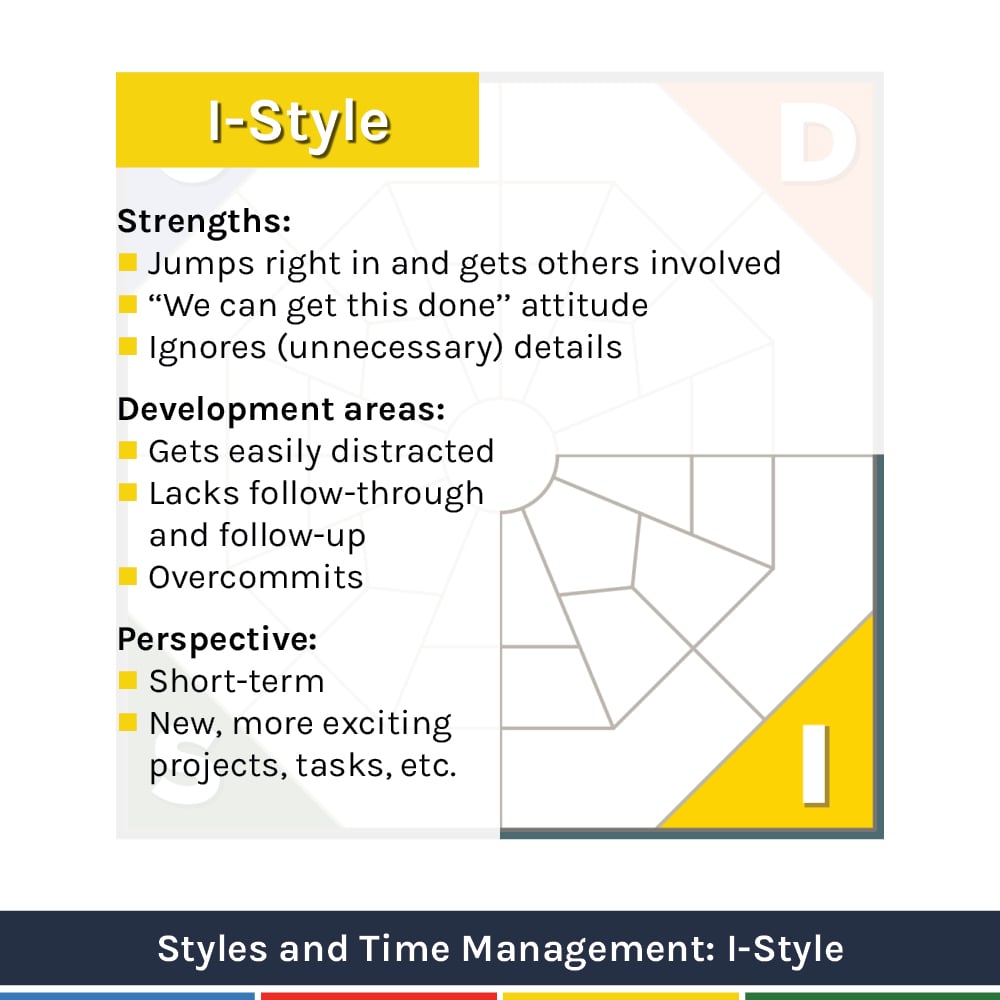
I-styles are active and people-oriented individuals. They, like D-styles, can ignore unnecessary details and jump right in. They are good at getting others involved with their “we can get this done” attitude. However, their optimism can get them to overcommit and overpromise. I-styles may be diverted and get easily distracted by new and more exciting ideas.
I-styles tend to get excited and motivated by new things and ideas, but then the work begins. Every project and every task has those parts that are mundane and not exciting. I-styles may find their attention and enthusiasm begin to decrease.
Here’s where I-styles can improve their time management style by building their discipline. Rather than celebrating too early in their mind, they can start by practicing more discipline to see the idea through. In the end, they will have better managed their time and decreased their stress levels.
S-styles and time management
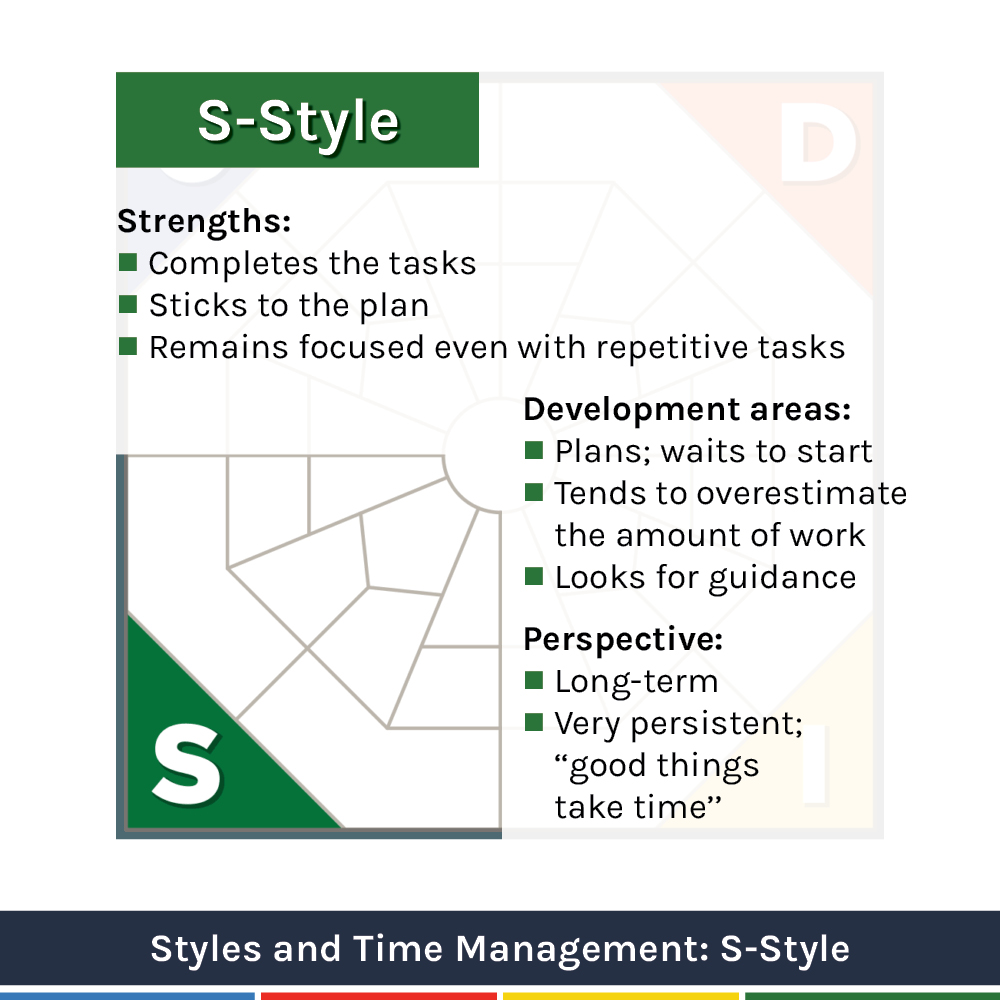
S-styles are comfortable when their environment is stable and secure. They are team players who, with clear instructions, will complete agreed upon tasks. We can trust them to stick to the plan and stay focused, even with repetitive tasks. S-styles, unlike I-styles and D-styles, tend to have longer term perspectives of time. The D-style is like a Ferrari race car; going from 0 to 60 mph in a few seconds. On the other hand, the S-style is like a train’s engine car; slow to leave the station, but once going is unstoppable. S-styles are persistent and will complete the task in a straight line to the endpoint.
S-styles perceive that positive outcomes take time, but that does not always work in their favor. They can improve their managing of time, by jumping in and doing it. They want to plan and understand how things should happen. S-styles may end up thinking too much instead of just starting. They can overestimate the amount of work needed and end up feeling overwhelmed. In fact, they can feel paralyzed because they feel overwhelmed and not know where to start.
If they just start, they may realize that it not as difficult as it originally seemed. They may be surprised that it didn’t take as long or was as hard as they thought it was going to be.
C-styles and time management
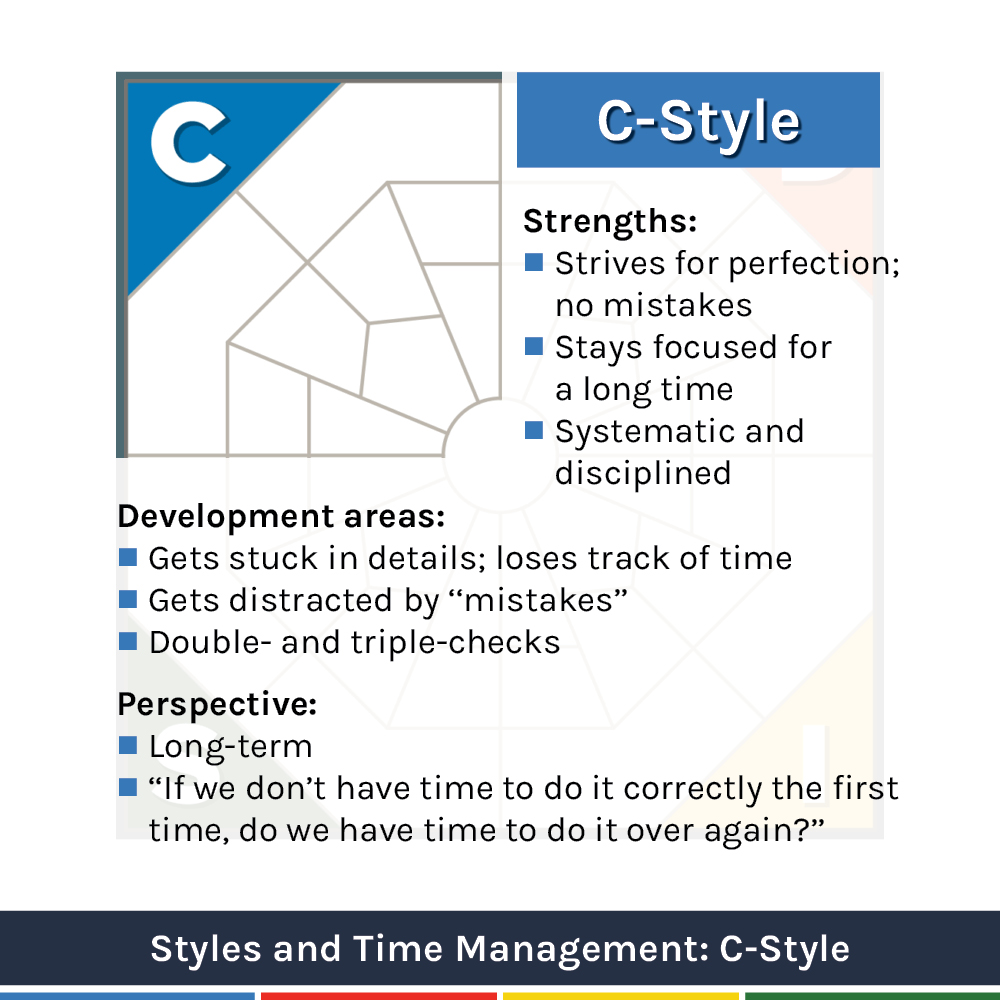
C-styles, like S-styles, also have a long-term perspective because they want to do things correctly even if it takes more time. They may feel the need to redo it if it isn’t correct. Disciplined C-styles are comfortable staying focused for long periods of time. They do not want to make mistakes so they may double and triple-check things. They can get stuck in the details, and lose track of time and the big picture. C-styles may become distracted when they encounter mistakes.
C-styles can build their awareness of “good” versus “perfect.” They need to remember to balance things being very good and always striving for perfection. Perfection takes a lot of time and it is not always attainable in results. C-styles need to recognize they need to let go of some perfections and doing it very well is more than enough.
Using Extended DISC tools
Extended DISC® tools help build our self-awareness. Additionally, it helps your client focus on how they can better manage time. One tool is the Reinforcement Report for Time Management. It is a brief, targeted workbook that revisits information already familiar to your clients when they went through your DISC session. The report helps them to better understand how their natural style prefers to manage time so they can embrace and practice ways to successfully adjust.
Remember, to think outside the box in terms of DISC tool applications. Contact us to learn more about our tools!
Contact us to learn more: CustomerService@ExtendedDISC.org
